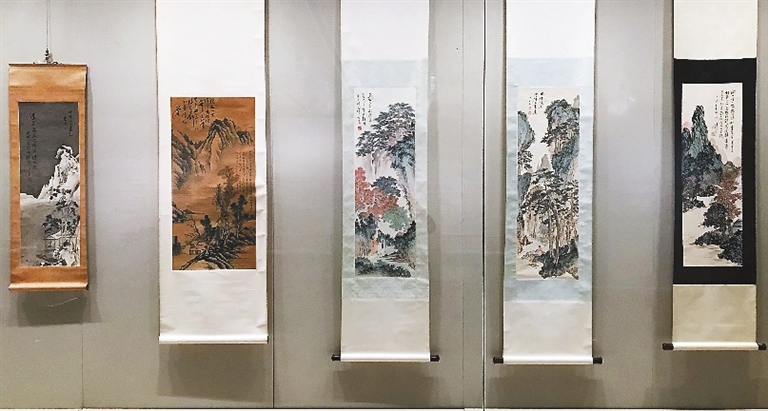
Cao Zhen caozhen0806@126.com Landscape paintings created by Chinese masters from the Qing Dynasty (1644-1911) and the early 20th century, including the Four Wangs, Pu Xinyu, Zhang Daqian, Li Kuchan and Qi Baishi, are on display at the “Misty Vistas” exhibition at Nanshan Museum. Entry is free. Chinese people have revered mountains and rivers since ancient times, and they used “mist and clouds” as an elegant metaphor to describe mountain-and-river landscapes. In Qing-Dynasty Beijing, those proficient in landscape painting were scholars and government officials who took to the brush during their leisure time. After the collapse of the Qing Dynasty, those imperial family members and officials began to regard painting as a vocation. Combined with foreign cultures and influenced by traveling painters from other parts of China, landscape paintings in Beijing took on a new look. “During the 300 years from the Qing Dynasty to the early 20th century, China had undergone drastic social changes, from prosperity to the decline. Saving the nation from foreign invaders was the priority. Meanwhile, science and art from the West also entered China, which made an unprecedented impact on traditional Chinese art. An inclusive and diversified era was thus formed,” said Yang Wenying, deputy director of Capital Museum. The exhibited items, on loan from Capital Museum, are divided into three sections: “Origins,” “Refining Antiquity” and “Renewing Traditions.” In “Origins,” paintings by the famous Four Wangs (Wang Shimin, Wang Jian, Wang Hui and Wang Yuanqi) show their techniques influenced by Ming Dynasty (1368-1644) artist Dong Qichang and even Song (960-1279) and Yuan Dynasty (1271-1368) painters. The Four Wangs’ elegant aesthetics and conservative style also influenced later painters in the early 20th century. The second section features artists in the early 20th century sticking to traditional techniques in the face of foreign cultural intrusion. In 1920, painters Zhou Zhaoxiang and Jin Cheng founded the Chinese Painting Research Association, urging “researching the traditional techniques, learning widely from new methods, advocating elegance and preserving the essence of traditional culture.” Painters like Lin Shu, Pu Xinyu and Wu Jingting grew up in an environment that exposed themselves to view and learn from antique paintings; therefore this group of artists chose to stick to traditional Chinese techniques and styles. The third section focuses on different groups of artists, with some following tradition, some fusing the new and the old, and some advocating innovation. These artists give a new lease on life to Chinese landscape painting. Dates: Until Feb. 9, 2020 Hours: 10 a.m.-6 p.m., closed Mondays Venue: Nanshan Museum, Nanshan District (南山区南山博物馆) Metro: Line 1 to Taoyuan Station (桃园站), Exit B | 
